|
Aromatherapy Oils
|
|
Aromatherapy Oils
|
Aromatherapy is a form of alternative medicine, in which healing effects are ascribed to the aromatic compounds in essential oils and other plant extracts. Many common essential oils have medicinal properties that have been applied in folk medicine since ancient times and are still widely used today. For example, many essential oils have antiseptic properties. Many are also claimed to have an uplifting effect on the mind. The claims are supported in some studies and unconfirmed in others
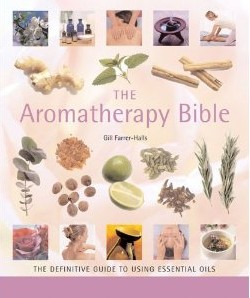
The Aromatherapy Bible
Book: The Definitive Guide to Using Essential Oils (... Bible)
(Paperback) |
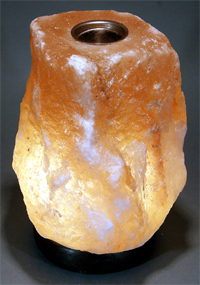 Aroma Therapy Salt Lamp
Large 8-10 lbs |
More Books, Audio CD's and Cards
Aura-Soma Book: Healing Through Color, Plants, and Crystal Energy (Paperback) |
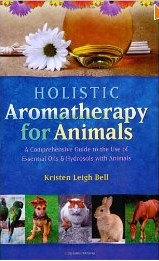
Holistic Aromatherapy for
Animals Book: A Comprehensive Guide to the Use of Essential
Oils & Hydrosols with Animals (Paperback) |
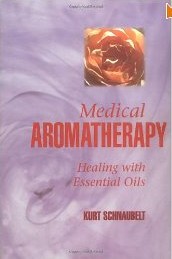
Medical Aromatherapy Book:
Healing with Essential Oils (Paperback) |
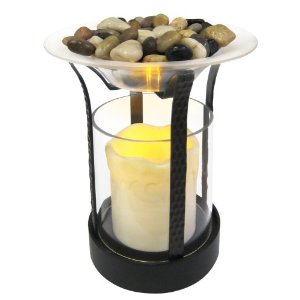
AromaSpa Flameless Candle Aromatherapy Oil Diffuser |
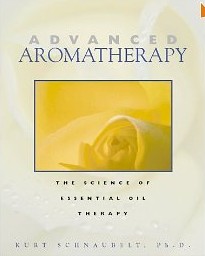
Advanced Aromatherapy: The Science of Essential Oil Therapy [Paperback] |
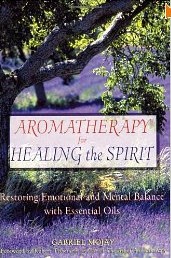
Aromatherapy for Healing the Spirit: Restoring Emotional and Mental Balance with
Essential Oils [Paperback] |
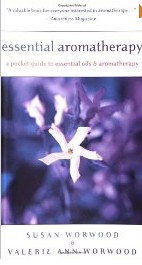 Essential Aromatherapy: A Pocket Guide to Essential Oils and Aromatherapy [Paperback] Susan E. Worwood (Author) $49.95 Use this A-Z reference to access essential oils and their applications. Formulas for blending oils and detailed treatment outlines assure readers will gain the most from their application and use |
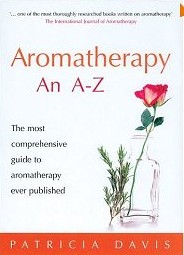
Aromatherapy: An A-Z: The Most Comprehensive Guide to Aromatherapy Ever Published
[Paperback] |
1/2 Ounce Essential Oils $35.00 |
|
| 1 Ounce Essential Oils $65.00 | 2 Ounce Essential Oils $95.00 | 4 Ounce Essential Oils $150.00 |
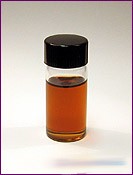 Allspice
Essential Oil (Pimento Berry/Leaf) Allspice
Essential Oil (Pimento Berry/Leaf)Allspice Berries Possible Uses: Arthritis, muscle tone, stiffness, rheumatism, muscular and gastric cramps, indigestion, nausea, depression, nervous tension/exhaustion and neuralgia. Safety Information: Lawless and Tisserand indicate that this oil may be a mucous membrane and derman irritant. Significant dilution suggested. |
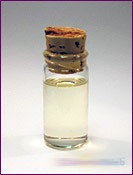 Anise
Essential Oil Anise
Essential OilAromatic Description: Distinctive scent of licorice. Rich and sweet. Possible Uses: Bronchitis, colds, coughs, flatulence, flu, muscle aches, rheumatism. Safety Information: Caution for those with hypersensitive skin or with skin problems. Avoid in endometriosis and oestrogen-dependent cancers. Is narcotic and slows circulation in large doses. |
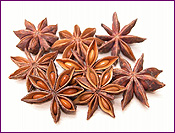 Star
Anise Essential Oil Star
Anise Essential OilAromatic Description: Sharp, anise and licorice-like aroma. Possible Uses: Rheumatism, bronchitis, coughing, colic, indigestion/cramping, colds, flu. Safety Information: Narcotic and slows circulation when used in large doses. Tisserand also cautions to avoid star anise in cases of alcoholism, liver disease, paracetamol use, breast-feeding, pregnancy, endometriosis, certain cancers, hyperplasia, damaged skin and with young children. |
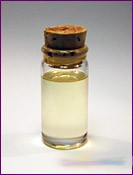 Angelica
Root Essential Oil Angelica
Root Essential OilAromatic Description: Fresh, peppery, woody, herbaceous. Possible Uses: Dull skin, exhaustion, gout, psoriasis, toxin build-up, water retention. Safety Information: Phototoxic. Avoid during pregnancy and diabetes. |
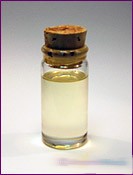 Amyris
Essential Oil Amyris
Essential OilAromatic Description: Reminiscent of benzoin, Amyris includes sweet, warm, vanilla notes with a woody, cedar-like character. Possible Uses: Perfumery/Fragrancing. Acts as a fixative. Also possesses antiseptic and sedative properties. Safety Information: Tisserand and Lawless both indicate that Amyris appears to be non-toxic. |
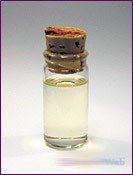 Ambrette
Seed Absolute Essential Oils Ambrette
Seed Absolute Essential OilsAromatic Description: Musky and rich with floral undertones. Possible Uses: Aches, stiffness, poor blood circulation, low blood pressure, anxiety, depression. |
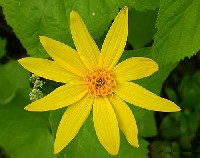 Arnica
Essential Oil - (Arnica montana): This year round herb helps stop pain. Use this
for arthritic aches, often set off by seasonal changes. Rub the tincture, cream,
or gel on sore spots, Do not use on broken skin. Arnica
Essential Oil - (Arnica montana): This year round herb helps stop pain. Use this
for arthritic aches, often set off by seasonal changes. Rub the tincture, cream,
or gel on sore spots, Do not use on broken skin. |
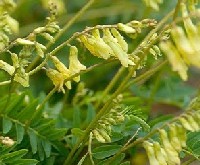 Astragalus
Essential Oil (Astragalus membranaceous): Use internally for allergies and
frequent colds. Also for diabetes, kidney problems, prolapsed organs, and
slow-healing skin eruptions, prevent or treat colds and flu. Astragalus
Essential Oil (Astragalus membranaceous): Use internally for allergies and
frequent colds. Also for diabetes, kidney problems, prolapsed organs, and
slow-healing skin eruptions, prevent or treat colds and flu. |
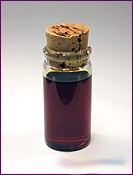 Peru
Balsam Essential Oil Peru
Balsam Essential OilAromatic Description: Sweet, fresh, earthy, balsamic. Possible Uses: Bronchitis, chapped skin, colds, coughing, eczema, flu, poor circulation, rashes, sensitive skin, stress. Safety Information: Possible sensitization. |
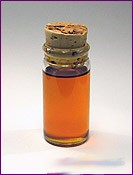 Bay
Essential Oil Bay
Essential OilAromatic Description: Medicinal, fruity, spicy, herbaceous aroma. Possible Uses: Dandruff, hair care, neuralgia, oily skin, poor circulation, sprains, strains. Safety Information: Avoid in alcoholism, in haemophilia, in prostatic cancer, with kidney and liver problems and if taking anticoagulants. Moderately toxic and a mucous membrane irritant. |
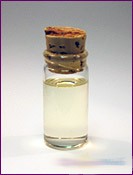 Bay Laurel Essential Oil Possible Uses: Amenorrhea, colds, flu, loss of appetite, tonsillitis. Safety Information: Lawless says that it can be narcotic, can cause dermatitis and also should not be used in pregnancy. |
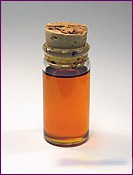 Benzoin
Essential Oils Benzoin
Essential OilsPossible Uses: Arthritis, bronchitis, chapped skin, coughing, laryngitis, stress. Safety Information: Possible skin sensitivity and contact dermatitis. |
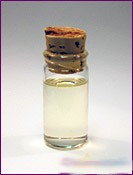 Black
Pepper Essential Oil Black
Pepper Essential OilPossible Uses: Aching muscles, arthritis, chilblains, constipation, muscle cramps, poor circulation, sluggish digestion. Safety Information: Essential Oil does not indicate any special precautions when using this oil |
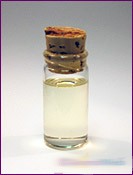 Blue
Cypress Essential Oil Blue
Cypress Essential OilAromatic Description: Fresh, sweet, with notes of lemon and cedar. Possible Uses: Arthritis, asthma, fragrance fixative. |
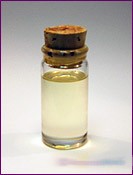 Holy
Basil Essential Oil Holy
Basil Essential OilAromatic Description: Strong, warming and spicy. Aromatically, Holy Basil Essential Oil smells like a cross between traditional Basil and Clove essential oils. Possible Uses: Limited information exists on the documented use and safety of Holy Basil Essential Oil. Safety Information: Use with caution and avoid in topical use, even if strongly diluted. |
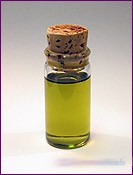 Bergamont Essential Oils (Citrus bergamia)
: Aromatic Description: Fresh, orange/lemon/citrusy, slightly
floral. Bergamont Essential Oils (Citrus bergamia)
: Aromatic Description: Fresh, orange/lemon/citrusy, slightly
floral.Possible Uses: Acne, abscesses, anxiety, boils, cold sores, cystitis, depression, halitosis, itching, loss of appetite, oily skin, psoriasis, stress. Safety Information: Phototoxic Bergamot oil is a powerful antiseptic. In appropriate dilution, it has proven its use in the treatment of many troublesome skin complaints, such as eczema, some of which can be reluctant to respond to other forms of treatment. Stress-related complaints such as headaches and irritability will often respond well to a massage with oil of bergamot in the blend. The effect of the oil is vitalizing and uplifting, soothing tension away without any sedative effect. Bergamot eases problem gastrointestinal spasm and flatulence and gentle abdominal massage can bring relief from constipation and colic. The oil is also detoxifying and is thought to help in the treatment of cellulite when used in massage. In addition to this, when used for bathing, berga-mot oil can soothe inflammation and can help alleviate vaginal itching and the symptoms of cystitis. In inhalation or massage, it can be used in the treatment of respiratory infections such as sore throats and bronchitis. Bergamot can also be used in a mouthwash to deodorize bad breath and fight mouth and throat infections, or on the hair to control dandruff. Suitable methods of use Bathing, hair care, inhalation, massage, mouthwash, skin care, vaporizer/diffuser. Botanical name:
Citrus bergamia, Citrus aurantium |
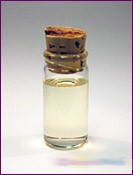 Bergamot
Mint Essential Oil Bergamot
Mint Essential OilAromatic Description: Fresh, minty, citrusy, softer than peppermint, about the strength of spearmint. Possible Uses: Possibly similar in therapeutic use to peppermint or spearmint. |
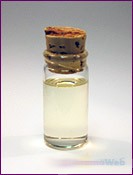 Basil
Essential Oil Basil
Essential OilAromatic Description: Sweet, herbaceous, licorice-like, slightly campherous. Possible Uses: Bronchitis, colds, coughs, exhaustion, flatulence, flu, gout, insect bites, insect repellent, muscle aches, rheumatism, sinusitis. Safety Information: Use sparingly with caution. High doses may be carcinogenic due to its methyl chavicol content. Avoid in cases of liver problems. Avoid during pregnancy. Basil Essential Oils: Botanical name: Ocimum basilicum Use: Relieves headaches, chest infections, digestive problems, antispasmodic, sore, overworked muscles. Helpful for mental fatigue and stress. Invigorates body, spirit, helps refresh the mind allowing concentration. Perfume Note: Top  Blends well with: Lavender, Bergamot, Clary Sage, Geranium, Black Pepper Source: flowering herb, leaves Production method: steam distillation Aromatherapy benefits: soothing, energizing, toning, illuminating Aroma type: spicy, camphore-like undertone Warning: Do not use Basil during pregnancy, can be a skin irritant. Safety Information: use recommended dilution or less
|
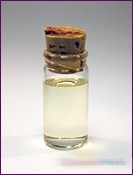 Cardamom
Essential Oil Cardamom
Essential OilPossible Uses: Appetite (loss of), colic, fatigue, halitosis, stress. Safety Information: Essential Oil does not indicate any special precautions when using this oil. 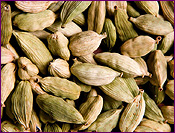 |
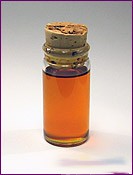 Carrot
Seed Essential Oil Carrot
Seed Essential OilAromatic Description: Earthy, woody, warm. It does not resemble the smell of carrots and is considered harsh or unpleasant by some. Possible Uses: Eczema, gout, mature skin, toxin build-up, water retention. |
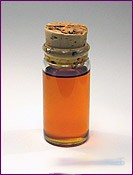 Cassia
Essential Oil Cassia
Essential OilAromatic Description: Resembling cinnamon oils in aroma, cassia is sometimes used as an economical substitute for fragrancing applications. Spicy, sweet, woodsy, earthy. Possible Uses: Fragrancing, indigestion, gas, colic, diarrhea, 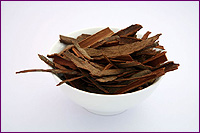 rheumatism, cold/flu.
rheumatism, cold/flu.Safety Information: Lawless indicates that this oil is a dermal irritant and mucous membrane irritant. Tisserand advises to completely avoid cassia in skin care applications. |
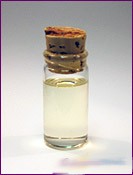 Chocolate
Peppermint Essential Oil Chocolate
Peppermint Essential OilAromatic Description: Soft and smooth peppermint aroma with a detectible chocolate note. Possible Uses: The uses may be similar to those of traditional Peppermint Essential Oil. Little documentation is available regarding Chocolate Peppermint Essential Oil's therapeutic properties, contraindications or constituents. Use with caution in skin care and therapeutic applications. |
||
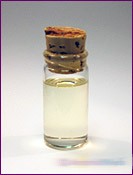 Virginian
Cedarwood Essential Oil Virginian
Cedarwood Essential OilAromatic Description: Fresh, woody, balsamic. It strongly resembles the aroma of cedar chests and closets. Possible Uses: Acne, arthritis, bronchitis, coughs, cystitis, dandruff, dermatitis, insect repellant, stress. Safety Information: Lawless indicates that this oil may be safer to use than Atlas Cedarwood. It can cause irritation and sensitization. Avoid during pregnancy. |
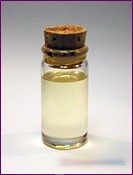 Atlas
Cedarwood Essential Oil Atlas
Cedarwood Essential OilAromatic Description: Woody, sweet, sharper note than Virginian cedarwood, slight aroma reminiscent of artificial mothballs, balsamic. Possible Uses: Acne, arthritis, bronchitis, coughing, cystitis, dandruff, dermatitis, stress. Safety Information: Avoid during pregnancy. |
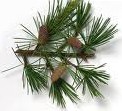 Cedarwood Essential Oils (Cedrus atlantica)
: Cedarwood oil has a rich, honey color and a
warm, woody, sweet smell that appeals to both sexes. The oil is
extracted from wood - sawdust, chips and shavings - by the process of
steam distillation. Aromatherapists use Cedarwood oil for the
treatment of respiratory ailments. It has antiseptic properties, and
is effective against coughs, bronchitis and catarrh. Its use in skin
and hair care is well recognized, and it can be very beneficial in the
treatment of dandruff, eczema and acne. As an ingredient in a blend to
perfume a room, cedarwood oil is warm and pleasant. The oil is
particularly useful in treating stress and tension. Cedarwood Essential Oils (Cedrus atlantica)
: Cedarwood oil has a rich, honey color and a
warm, woody, sweet smell that appeals to both sexes. The oil is
extracted from wood - sawdust, chips and shavings - by the process of
steam distillation. Aromatherapists use Cedarwood oil for the
treatment of respiratory ailments. It has antiseptic properties, and
is effective against coughs, bronchitis and catarrh. Its use in skin
and hair care is well recognized, and it can be very beneficial in the
treatment of dandruff, eczema and acne. As an ingredient in a blend to
perfume a room, cedarwood oil is warm and pleasant. The oil is
particularly useful in treating stress and tension.
Botanical name: cedrus
deodora |
 Calendula Essential Oil (calendula officinalis): Use calendula tinctures, oil, lotions, or creams to soothe chapped skin and lips. Look for products with at least 10-percent extract of Calendula.
|
 Chamomile Essential Oil (Matricaria recutita): This soothing herb
works great as a dust-irritant reliever. Brew a cup of tea and let it
cool. Place the room temperature tea soaked in cotton on your eyes.
Drink a cup of chamomile tea for upset stomachs, heartburn,
indigestion, or to promote relaxation. (Roman): Chamomile Essential Oil (Matricaria recutita): This soothing herb
works great as a dust-irritant reliever. Brew a cup of tea and let it
cool. Place the room temperature tea soaked in cotton on your eyes.
Drink a cup of chamomile tea for upset stomachs, heartburn,
indigestion, or to promote relaxation. (Roman): Botanical name:chamaemulum nobile Use: There are several varieties of this oil, though they do overlap somewhat in their properties, Maroc being the least potent. The greatest uses are anti-inflammatory, sedative, soothing and calming. A good antidepressant. It is excellent in skin disorders as it reduces the associated redness and pain. It is one of only a few oils which can be used directly on the skin, or on children. Perfume Note: Middle Blends well with: Neroli, Rosewood, Lavender, Clary Sage, Jasmine Source: flower Production method: distillation Aromatherapy benefits: calming, soothing, relaxing, nourishing Aroma type: sweet, warm, fresh Warning: none noted Safety Information: Mild enough for infants and children |
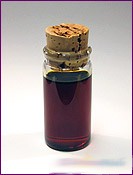 Coffee
Absolute/CO2 Essential Oils Coffee
Absolute/CO2 Essential OilsAromatic Description: Strong, rich, aroma of fresh brewed coffee. |
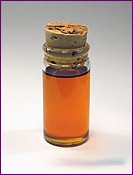 Cinnamon
Essential Oil Cinnamon
Essential OilAromatic Description: Much richer in aroma than ground cinnamon. (Ground cinnamon and cinnamon sticks is usually not cinnamon at all but is cassia. Cinnamon Essential Oil is peppery, earthy, spicy, bright yet slightly woodsy. Oil distilled from the bark of the cinnamon tree is preferred over the oil distilled from the leaves. Cinnamon Bark Essential Oil, however, tends to be much more costly. Possible Uses: Constipation, exhaustion, flatulence, lice, low blood pressure, rheumatism, scabies, stress. Safety Information: Mucous membrane irritant and strong skin sensitizer. Avoid in alcoholism, in haemophilia, in prostatic cancer, with kidney and liver problems and if taking anticoagulants. Only the oil from the leaf should be used. The oil from the bark is too hazardous. 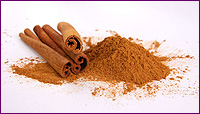 Cinnamon
Bark Oil Cinnamon
Bark Oil
Cinnamon (Cinnamoma Cassicia): There are two different oils extracted from the tree. Cinnamon-leaf oil has some use in aromatherapy, but cinnamon-bark oil is a strong irritant, high in toxicity and should not be used. Cinnamon-leaf oil is extracted from the leaves and young twigs of the tree by steam distillation. Commercially, it is used in the food and drinks industry in some sweets and carbonated drinks, and in the pharmaceutical industry it is used in cough medications and dental preparations. Aroma therapists can use cinnamon-leaf oil in massage to relieve rheumatism, and it can also be beneficial in the treatment of digestive disorders. It is a stimulant and is used to treat circulatory problems. It can also be of benefit to those who are suffering from nervous exhaustion. In Traditional Chinese Medicine, Cinnamon is used to warm the interior as well as used for exterior conditions such as a common cold or flu.
|
Heating the oil creates vapors which open sinuses and breathing passages. This oil is uplifting, an aphrodisiac and reviving, is a mental stimulant, improves mental clarity and memory; improves digestion; reduces pain by numbing the area; a disinfectant and repels insects. Clove bud oil can irritate the skin and should either be avoided or used with extra care by people who have sensitive skin. Use small amounts.
|
 Clove
Bud Essential Oil Clove
Bud Essential OilAromatic Description: Spicy, warming yet slightly bitter, woody, reminiscent of true clove buds, but richer. Possible Uses: Arthritis, asthma, bronchitis, rheumatism, sprains, strains, toothache. Safety Information: Mucous membrane and dermal irritant. Avoid in alcoholism, in haemophilia, in prostatic cancer, with kidney and liver problems and if taking anticoagulants.
Cloves |
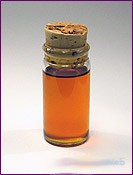 Cumin
Essential Oil Cumin
Essential OilAromatic Description: Spicy, masculine, sensual, earthy. Possible Uses: Toxin buildup, poor circulation, low blood pressure, colic, stomach cramps, indigestion, gas, fatigue. [Julia Lawless, The Illustrated Encyclopedia of Essential Oils Safety Information: Robert Tisserand and Julia Lawless says that it can be phototoxic. Avoid during pregnancy. |
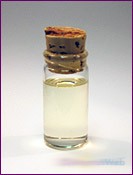 Citronella
Essential Oil Citronella
Essential OilAromatic Description: Citrusy (similar to lemongrass), slightly fruity, fresh, sweet. Possible Uses: Excessive perspiration, fatigue, headache, insect repellant, oily skin. 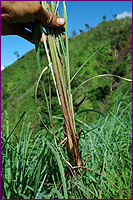 Safety Information: Possible sensitization. Lawless says to avoid Citronella during pregnancy. |
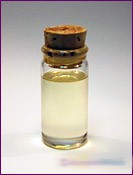 Cajeput
Essential Oil Cajeput
Essential OilAromatic Description: Fresh, campherous aroma with a fruity note. Possible Uses: Asthma, bronchitis, coughs, muscle aches, oily skin, rheumatism, sinusitis, sore throat, spots. Safety Information: May cause skin irritation. |
 Clary
Sage Essential
Oils: Clary
Sage Essential
Oils: Botanical name: salvia sciarea Use: Excellent oil for the treatment of anyone with stress and tension. It is a powerful muscle relaxant which induces a euphoric state. Valuable in the treatment of asthma as it relaxes spasms in the bronchial tubes. Good for all kinds of cramps and muscle tension, which makes it invaluable for use in stopping uterine contractions in menstrual cramps. Good for greasy hair or dandruff. Good for depression, inflammation, rejuvenates skin cells. Perfume Note: Top Blends well with: Chamomile, Lavender, Ylang Ylang, Sandalwood, Benzoin Source: flowers, leaves Production method: distillation Aromatherapy benefits: warming, relaxing, calming, euphoric Aroma type: sweet, spicy, balsamic undertones Warning: avoid during pregnancy and during consumption of alcohol Safety Information: clary sage may cause drowsiness |
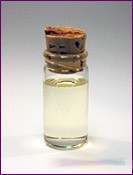 Common
Sage Essential Oil (Dalmation Sage Essential Oil) Common
Sage Essential Oil (Dalmation Sage Essential Oil) Strength of Initial Aroma: Strong Aromatic Description: Herbacous, fruity, fresh, camphorous. Safety Information: High thujone content. Avoid in pregnancy. Avoid in epilepsy. |
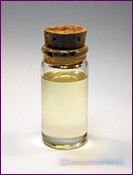 Coriander
Essential Oil (Cilantro) Coriander
Essential Oil (Cilantro)Aromatic Description: Sweet, herbaceous, spicy, woody, slightly fruity. Possible Uses: Aches, arthritis, colic, fatigue, grout, indigestion, nausea, rheumatism.
|
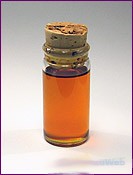 Cananga
Essential Oil Cananga
Essential OilAromatic Description: Resembling ylang ylang in aroma, cananga is sometimes used as an economical substitute in fragrancing applications. Floral, sweet, slightly woody. Possible Uses: Oily skin/hair, insect bites, high blood pressure, anxiety, nervous tension, stress, fragrancing. 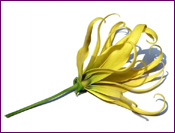 Safety Information: Lawless indicates that cananga is primarily non-toxic, but should be used with caution on those with sensitive skin. |
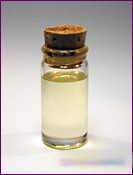 Catmint/Catnip
Essential Oil Catmint/Catnip
Essential OilAromatic Description: Herbaceous with a subdued mint aroma. Possible Uses: Minimal documentation on essential oil use. May act as a topical anesthetic, anti-inflammatory, anti-rheumatic, astringent, carminative, nervine, sedative. Safety Information: Tisserand advises that it may be a skin sensitizer and to use it with caution. Sheppard-Hanger advises to avoid use during pregnancy and to avoid use in babies and children. |
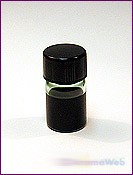 German
Chamomile Essential Oil German
Chamomile Essential OilAromatic Description: Sweet, fruity, herbaceous. Possible Uses: Abscesses, allergies, arthritis, boils, colic, cuts, cystitis, dermatitis, dysmenorrhea, earache, flatulence, hair, headache, inflamed skin, insect bites, insomnia, nausea, neuralgia, PMS, rheumatism, sores, sprains, strains, stress, wounds. Safety Information: May cause dermatitis in some. |
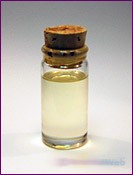 Cypress
Essential Oil Cypress
Essential OilAromatic Description: Fresh, herbaceous, slightly woody evergreen aroma. Possible Uses: Excessive perspiration, hemorrhoids, menorrhagia, oily skin, rheumatism, vericse veins. 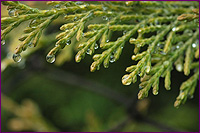 |
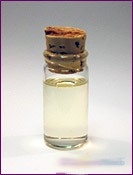
Roman Chamomile
Essential Oil |
|
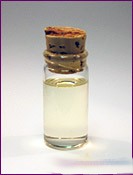 Dill
Essential Oil Dill
Essential OilAromatic Description: Fresh, sweet, herbaceous, slightly earthy. Possible Uses: Amenorrhea, flatulence, griping pains.  |
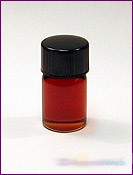 Davana
Essential Oil Davana
Essential OilAromatic Description: Rich, sweet, fruity, slightly woody with a hint of vanilla and a sSafety Information: Sheppard-Hanger advises to avoid in pregnancy and with babies and children. Tisserand lists Davana as non-toxic and very midly irritating. |
|
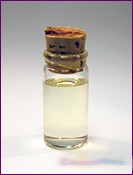 Eucalyptus
Radiata Essential Oil Eucalyptus
Radiata Essential OilAromatic Description: Slightly camphorous, sweet, fruity. 133" height="175">Eucalyptus Radiata Essential Oil Aromatic Description: Slightly camphorous, sweet, fruity. Possible Uses: Arthritis, bronchitis, catarhh, cold sores, colds, coughing, fever, flu, poor circulation, sinusitis. |
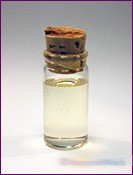 Eucalyptus
Essential Oil Eucalyptus
Essential OilAromatic Description: Fresh, medicinal, woody, earthy. Possible Uses: Arthritis, bronchitis, catarhh, cold sores, colds, coughing, fever, flu, poor circulation, sinusitis. Safety Information: Very toxic when taken orally (no essential oil should be taken internally 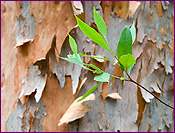 without the guidance of a qualified aromatherapy practitioner).
without the guidance of a qualified aromatherapy practitioner). |
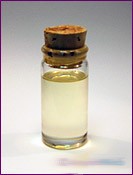 Lemon
Eucalyptus Essential Oil Lemon
Eucalyptus Essential OilAromatic Description: Sweet, lemony, fresh, with a woody hint. Possible Uses: Arthritis, bronchitis, catarhh, cold sores, colds, coughing, fever, flu, poor circulation, sinusitis. |
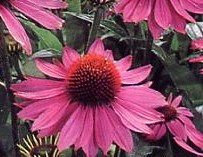 Echinacea
Essential Oils Echinacea
Essential Oils
Echinacea was originally used by American Indians to help fight off infections
and to treat everything from boils and toothache to snakebites. The theory is
that it helps boost the number of white blood cells, which are the first line of
defence of the immune system. In religious ceremonies, Echinacea was used as an
offering to the spirits or gods and goddesses and to strengthen a spell or
ritual. |
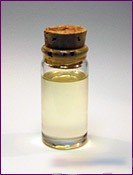 Elemi
Essential Oil Elemi
Essential OilAromatic Description: Fresh, citrusy, peppery, spicy. Possible Uses: Bronchitis, catarrh, extreme coughing, mature skin, scars, stress, wounds. Safety Information: Possible carcinogen, but research is incomplete. |
|
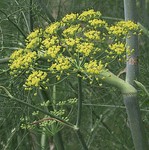 Sweet
Fennel Essential Oils Sweet
Fennel Essential Oils
Status: Unsprayed |
||
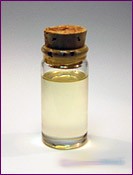 Frankincense
Essential Oil (Olibanum) Frankincense
Essential Oil (Olibanum)Aromatic Description: Fresh, woody, balsamic, slightly spicy and fruity. Possible Uses: Anxiety, asthma, bronchitis, extreme coughing, scars, stress, stretch marks.
Frankincense: |
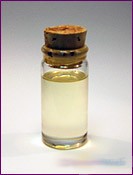 Fennel
Essential Oil Fennel
Essential OilAromatic Description: Sweet, somewhat spicy, licorice-like (Anise) aroma. Possible Uses: Bruises, cellulites, flatulence, gums, halitosis, mouth, nausea, obesity, toxin build-up, water retention. Safety Information: Dermal sensitizer, possibly carcinogenic. Avoid in instances of  endometriosis, prostatic hyperplasia and oestrogen-dependent cancers.
endometriosis, prostatic hyperplasia and oestrogen-dependent cancers. Narcotic in large quantities. Avoid in epilepsy and if pregnant. |
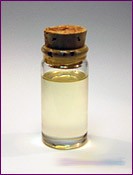 Fir
Needle Essential Oil Fir
Needle Essential OilAromatic Description: Fresh, woody, earthy, sweet. Possible Uses: Arthritis, bronchitis, colds, coughs, flu, muscle aches, rheumatism, sinusitis. 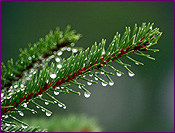 Safety Information: Possible skin irritation depending on true plant species. |
 Ginkgo Essential Oil (Ginkgo biloba): Take ginkgo for low
circulation or insufficient blood flow, mental fuzziness, memory loss,
or vertigo. Take 120 milligrams per day in divided doses with food.
Look for products with 24-percent flavonoid glycosides, or else 5- to
7- percent terpene lactones (including 3-percent ginkgolides) Ginkgo Essential Oil (Ginkgo biloba): Take ginkgo for low
circulation or insufficient blood flow, mental fuzziness, memory loss,
or vertigo. Take 120 milligrams per day in divided doses with food.
Look for products with 24-percent flavonoid glycosides, or else 5- to
7- percent terpene lactones (including 3-percent ginkgolides)
Aromatherapy & Health
Uses: Uplifting and tonic. Improves circulation. Aids depression, senility,
forgetfulness, anxiety, ADD, Alzheimer's Disease, varicose veins, tinnitus,
erectile dysfunction. |
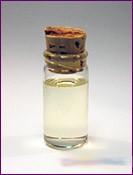 Geranium
Essential Oil Geranium
Essential OilAromatic Description: Floral, fresh, sweet, with a fruity note. Possible Uses: Acne, cellulites, dull skin, lice, menopause, oily skin. Safety Information: Use caution to avoid dermatitis in hypersensitive persons. Avoid during pregnancy. Botanical name: pelargonium ordorantisimum Use: One of the true balancing oils. It is an antidepressant and antiseptic. Good for skin care. It works as a great hormone balancer in all hormone related conditions which makes it useful in menstrual disorders. Relieves pain, fights infection, stops cuts from bleeding. Tightens and tones tissue. Diminishes depression, lowers blood sugar levels. Reduces fluid retention 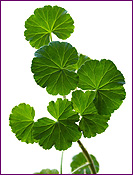 Perfume Note: Middle Blends well with: Neroli, Rosewood, Fennel, Vetiver, Frankincense, Rose Source: entire plant Production method: steam distillation Aromatherapy benefits: balancing, calming, harmonizing Aroma type: sweet, rosy, minty Warning: Can lower your blood sugar level Safety Information: Avoid if you are hypoglycemic |
|
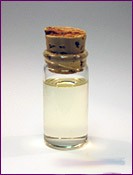 Galbanum
Essential Oil Galbanum
Essential OilAromatic Description: Fresh, arthy, balsamic, woody, spicy. Possible Uses: Abscesses, acne, boils, bronchitis, cuts, lice, mature skin, muscle aches, poor circulation, rheumatism, scars, sores, stretch marks, wounds. |
 Gurjum
Balsam Essential Oil Gurjum
Balsam Essential OilAromatic Description: Sweet yet peppery. Possible Uses: Antiseptic, anti-inflammatory, skin inflammation, bronchial infections, colitis, anxiety. Safety Information: Sheppard-Hanger indicates that it is non-toxic and non-irritating when used at low doses. |
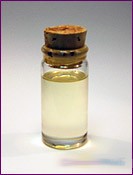 Ginger
Essential Oil Ginger
Essential Oil
Botanical name:
zingiber officinale |
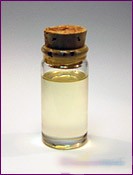 Grapefruit
Essential Oil Grapefruit
Essential OilAromatic Description: Citrusy, similar to lemon and reminiscent to the aroma of the grapefruit rind, but more concentrated.Description: Citrusy, similar to lemon and reminiscent to the aroma of the grapefSafety Information: Phototoxic according to Robert Tisserand. I have read conflicting reports as to whether Grapefruit Essential Oil is phototoxic, and the method of 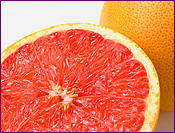 distillation may play a role. It may be prudent to treat Grapefruit Essential
Oil as a phototoxic oil.
distillation may play a role. It may be prudent to treat Grapefruit Essential
Oil as a phototoxic oil. |
||
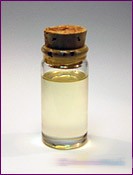 Helichrysum
Essential Oil (Immortelle) Helichrysum
Essential Oil (Immortelle)Aromatic Description: Fresh, earthy, herbaceous.th="13Possible Uses: Abscesses, acne, boils, burns, cuts, dermatitis, eczema, irritated skin, wounds, 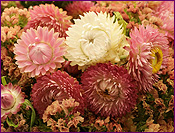 wounds.
wounds. |
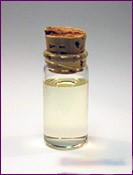 Hyssop
Essential Oil Hyssop
Essential OilAromatic Description: Fresh, earthy, fruity, woody, slightly sweet.h="133" height="175">Hyssop Essential Oil Aromatic Description: Fresh, earthy, fruity, woody, slightly sweet. Possible Uses: Bruises, coughing, sore throat. Safety Information: Moderately toxic and neurotoxic (toxic to the nervous system). Avoid in epilepsy, fever, pregnancy and children. Avoid in hypertension. |
 Holy
Basil Essential Oil Holy
Basil Essential OilAromatic Description: Strong, warming and spicy. Aromatically, Holy Basil Essential Oil smells like a cross between traditional Basil and Clove essential oils. |
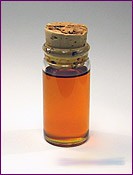 Jasmine
Absolute Essential Oils Jasmine
Absolute Essential OilsAromatic Description: Warm, floral, exotic. Possible Uses: Depression, dry skin, exhaustion, labor pains, sensitive skin.
Botanical name: jasmine officinalis |
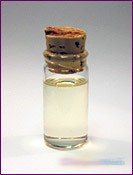 Juniper
Berry Essential Oil Juniper
Berry Essential OilAromatic Description: Crisp, woody, sweet, earthy, with almost a hidden fruity note.er Berry Essential Oil Aromatic Description: Crisp, woody, sweet, earthy, with almost a hidden fruity note. Possible Uses: Colds, flu, acne, cellulitis, gout, hemorrhoids, obesity, rheumatism, toxin build-up. Safety InfoUse: An antiseptic, diuretic and fights infection. Excellent for its detoxification properties. In small quantities it can help alleviate urine retention, though in large quantities the opposite is true. Excellent oil for urinary tract infections. A good oil for skin conditions such as eczema and dermatitis, though the condition may appear to get worse before it gets better, as is the case with most forms of natural healing. 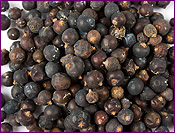 Perfume Note: Middle Blends well with: Marjoram, Chamomile, Helichrysum Source: berries Production method: steam distillation Aromatherapy benefits: refreshing, stimulating, relaxing Aroma type: spicy, peppery, pine-like Warning: avoid during pregnancy. activates the kidneys Safety Information: consult your healthcare provider with kidney problems. |
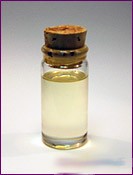 Kanuka
Essential Oil Kanuka
Essential OilAromatic Description: Sweet, herbaceous, earthy, similar to the aroma of Manuka. "175">Possible Uses: (Uses listed are those for Common Tea Tree): Acne, athlete's foot, candida, chicken pox, cold sores, colds, corns, cuts, flu, insect bites, itching, migraine, oily skin, ringworm, sinusitis, sores, spots, urethritis, warts, whooping cough. |
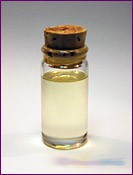 Lavender
Essential Oil Lavender
Essential OilAromatic Description: Fresh, sweet, floral, herbaceous, slightly fruity.ght="1Possible Uses: Acne, allergies, anxiety, asthma, athlete's foot, bruises, burns, chicken pox, colic, cuts, cystitis, depression, dermatitis, dysmenorrhea, earache, flatulence, headache, hypertension, insect bites, insect repellant, itching, labor pains, migrane, oily skin, rheumatism, scabies, scars, sores, sprains, strains, stress, stretch marks, vertigo, whooping cough 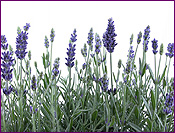 Lavandula abrialis Essential Oil (and other hybrids) Aromatic Description: Fresh, sweet, floral, more herbaceous than lavender with a slightly camphorous quality. Possible Uses: Same uses as Lavendula officinalis. Constituents: Varies somewhat between the hybrid species. Check with your supplier for specific chemical composition. Safety Information: Generally non-irritant, non-toxic in small quantities. Use: stimulates new cell growth, lifts depression, calms nerves, fights infection, reduces inflammation, and eases congestion. Relieves pain and muscle spasm. Lowers blood pressure. Perfume Note: Middle Blends well with: Geranium, Bergamot, Lemon, Ylang Ylang, Rosewood Source: flowers, stalks Production method: steam distillation Aromatherapy benefits: stimulates, relaxes, calms, soothes Aroma type: sweet, floral, herbaceous Warning: none noted |
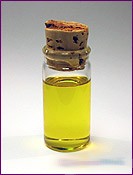 Lemon Essential Oilalign="left" width="133" height="175">
Lemon Essential Oil |
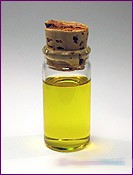 Lemongrass
Essential Oils Lemongrass
Essential Oils
Aromatic Description: Fresh, lemony, earthy. |
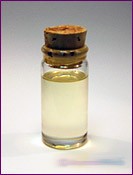 Lavendin
Essential Oil Lavendin
Essential OilAromatic Description: Fresh, sweet, floral, more herbaceous than lavender.eight="175">Lavendin Essential Oil Aromatic Description: Fresh, sweet, floral, more herbaceous than lavender. Possible Uses: Abscesses, asthma, blisters, boils, burns, cuts, cystitis, dry skin, dull skin, eczema, fatigue, Safety Information: Neurotoxic (toxic to the nerves). Avoid in pregnancy, epilepsy and fever because of camphor content in Lavandin. |
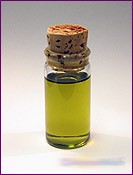 Lime
Essential Oil Lime
Essential OilAromatic Description: Fresh, citrusy, sweet.al Oil" align="left" width="133" height="175">Lime Essential Oil Aromatic Description: Fresh, citrusy, sweet. Possible Uses: Acne, asthma, chilblains, colds, dull skin, flu, varicose veins. Lime Essential Oil is well known in folklore for its ability toSafety Information: Phototoxic. 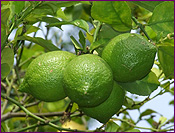 |
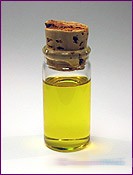 Melissa
(Lemon Balm) Essential Oil Melissa
(Lemon Balm) Essential OilAromatic Description: Fresh, lemony, herbaceous. Possible Uses: Anxiety, depression, hypertension, insomnia, migraine, menstrual cramping, indigestion, nausea, asthma, bronchitis, coughing, insect repellent, eczema, fragrancing. 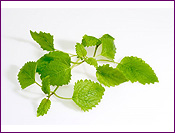 Safety Information: Lawless indicates that Melissa essential oil is non-toxic at low doeses, but that it can cause sensitization/irritation. She advises to use in very low dilution. |
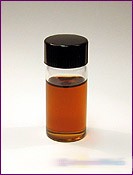 Linden
Blossom Absolute Essential Oils (Lime Blossom) Linden
Blossom Absolute Essential Oils (Lime Blossom)Aromatic Description: Warm, floral, honey-like, with a slight citrus-like note. Possible Uses: Headache, insomnia, migraine, stress. Constituents: Farnesol. 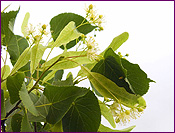 |
||
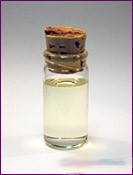 Manuka
Essential Oil (New Zealand Tea Tree) Manuka
Essential Oil (New Zealand Tea Tree)Aromatic Description: Woody, earthy, balsamic. It is richer and warmer than common Tea Tree. Possible Uses: (Uses listed are those for Common Tea Tree): Acne, athlete's foot, candida, chicken pox, cold sores, colds, corns, cuts, flu, insect bites, itching, migraine, oily skin, ringworm, sinusitis, sores, spots, urethritis, warts, whooping cough. |
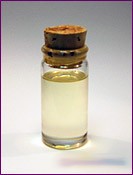 Mullein
Essential Oil Mullein
Essential OilAromatic Description: Spicy with a nutmeg-like character. Possible Uses: Very little documentation is available on Mullein essential oil. Hoffmann describes the herb as being useful for an expectorant and as an anti-inflammatory. |
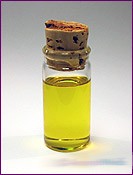 May
Chang Essential Oil May
Chang Essential OilAromatic Description: Sharp, with a complex lemony aroma. Possible Uses: Acne, indigestion. Safety Information: Avoid with glaucoma. May have a homeone-like action. Avoid in prostatic hyperplasia. Avoid with sensitive, diseased or dmanaged skin. Slight risk of sensitization. Do not administer to children. |
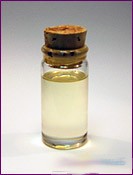 Marjoram
Essential Oil Marjoram
Essential OilAromatic Description: Herbaceous, sweet, woody, with a campherous, medicinal aroma. Possible Uses: Aching muscles, amenorrhea, bronchitis, chiliblains, colic, coughing, excessive sex drive, flatulence, hypertension, muscle cramps, neuralgia, rheumatism, sprains, strains, stress, ticks. Safety Information: Avoid during pregnancy. 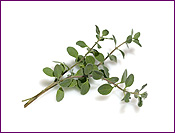
Use: Relieves pain and muscle spasms, fights infection, lowers blood pressure.
Improves digestion, stimulates menstruation, calms nerves, promotes elimination,
decreases sexual desire. Great for migraines, arthritis, PMS. |
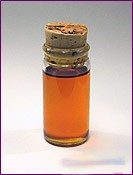 Myrrh
Essential Oil Myrrh
Essential OilAromatic Description: Warm, earthy, woody, balsamic. Possible Uses: Amenorrhea, athlete's foot, bronchitis, chapped skin, dysmenorrhea, gums, halitosis, hemorrhoids, itching, mouth, ringworm, toothache. Safety Information: Mildly toxic when taken internally (no essential oil should be taken internally without the guidance of a qualified aromatherapy practitioner Myrrh: Botanical name: commiphora myrrha Use: reduces inflammation, fights bacterial and fungal infection. Encourages new cell growth and wound healing. Helps with digestion, gas, expels mucus, strengthens the lungs, and maintains healthy gums. Perfume Note: Base Blends well with: Frankincense, Clary Sage, Benzoin, Bergamot Source: resin Production method: steam distillation Aromatherapy benefits: Aroma type: sweet, smoky, musky, spicy Warning: stimulates menstrual flow Safety Information: Avoid during pregnancy |
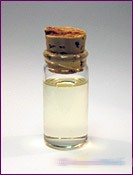 Mandravasarotra
Essential Oil (Saro Essential Oil) Mandravasarotra
Essential Oil (Saro Essential Oil)Aromatic Description: Camphorous yet uplifting and lemony/fruity. Possible Uses: Limited reliable information exists on Saro Essential Oil. Its camphorous/expectorant quality makes this an oil likely to be helpful with respiratory issues including easing coughs, asthma and bronchitis. Emotionally, this oil is uplifting and may be helpful in diffuser blends for depression and anxiety. Safety Information: Limited reliable information exists. It is recommended that Saro Essential Oil is not used with children or in pregnancy, epilepsy, with those having heart conditions or in other situations where fragile health exists. Avoid use on the skin.
|
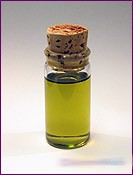 Mandarin
Orange Essential Oil Mandarin
Orange Essential OilAromatic Description: Very sweet, citrusy, fruity. Possible Uses: Acne, dull skin, insomnia, oily skin, scars, spots, stress, wrinkles. Safety Information: Essential Oil Safety by Robert Tisserand does not indicate any special precautions when using this oil. I have read conflicting reports as to whether Mandarin Essential Oil is phototoxic. It may be prudent to treat Mandarin Essential Oil as a phototoxic oil. 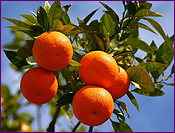 |
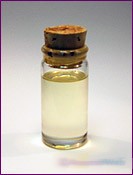 Myrtle
Essential Oil Myrtle
Essential OilAromatic Description: Sweet, slightly camphorous with a floral hint. Possible Uses: Asthma, coughs, sore throat.
|
|
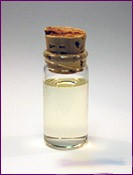 Nutmeg
Essential Oil Nutmeg
Essential OilAromatic Description: Rich, spicy, sweet, woody. Similar to the cooking spice, but richer and more fragrant. Possible Uses: Arthritis, constipation, fatigue, muscle aches, nausea, neralgia, poor circulation, rheumatism, slow digestion. Safety Information: If used in large amounts, can cause toxic symptoms such as nausea and tachycardia. Possible oral toxin |
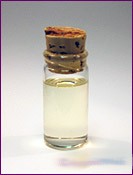 Niaouli
Essential Oil Niaouli
Essential OilAromatic Description: Earthy, musty, harsh. Possible Uses: Aches, acne, bronchitis, colds, coughs, cuts, dull skin, flu, oily skin, sore throat, whooping cough. |
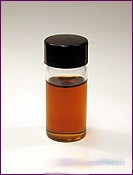 Neroli
Essential Oil Neroli
Essential OilAromatic Description: Intensely floral, citrusy, sweet and exotic. Possible Uses: Depression, frigidity, insomnia, mature skin, scars, shock, stress, stretch marks. Safety Information: Essential Oil Safety by Robert Tisserand does not indicate any special precautions when using this oil. Unlike many other citrus oils, Neroli Essential Oil is not considered phototoxic. Use: calms nerves, lifts depression, increases sexual desire. Fights infection, reduces inflammation, relieves muscle spasms. Softens, soothes skin, stimulates new cell growth, helps digestion and gas. 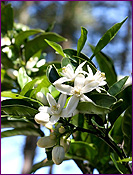 Blends well with: Sandalwood, Rose, Jasmine, Benzoin, Vetiver Source: flowers Production method: steam distillation Aromatherapy benefits: relaxing, dispels fear, renewal Aroma type: sweet, citrus, spicy, bitter Warning: none noted |
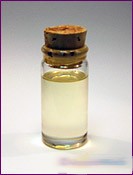 Oregano
Essential Oil Oregano
Essential OilAromatic Description: Herbaceous, sharp. Possible Uses: Coughs, digestion. Safety Information: Skin irritant, mucous membrane irritant, can cause skin irritation. 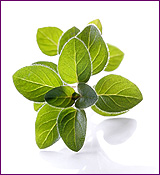 |
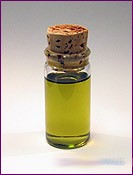 Bitter Orange Essential Oil Aromatic Description: As the name implies, it has a bitter orange aroma reminiscent of a cross between the sweetness of sweet orange oil and the slight bitterness of grapefruit oil. Possible Uses: Colds, constipation, dull skin, flatulence, flatulence, flu, gums, mouth, slow digestion, stress. Safety Information: Phototoxic. |
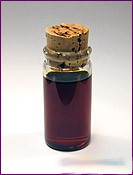 Oakmoss
Absolute Essential Oils Oakmoss
Absolute Essential OilsAromatic Description: Rich, earthy, woody. Possible Uses: Used in perfumery for its earthy aroma and its properties as a fragrance fixative. Safety Information: Use with extreme caution. Dermal sensitizer, toxic, and mucous membrane irritant. Avoid in epilepsy and pregnancy. |
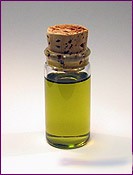 Sweet
Orange Essential Oil Sweet
Orange Essential OilAromatic Description: Citrusy, sweet, reminiscent of orange peels, but more concentrated. Possible Uses: Colds, constipation, dull skin, flatulence, flatulence, flu, gums, mouth, slow digestion, stress. Safety Information: Lawless reports that a few people have experienced dermatitis from the limonene content of Sweet Orange. I have read conflicting reports as to whether Sweet Orange Essential Oil is phototoxic, and the method of distillation may play a role. It may be prudent to treat Sweet Orange Essential Oil as a phototoxic oil. Orange Essential Oil : Botanical name: citrus sinensis (sweet) Use: stimulates lymphatic circulation, improves immunity, fights infection, reduces inflammation, relieves muscle spasm, eases digestive disorders. Cools fever and warms chills, calms nerves, diminishes depression.  Perfume Note: Top Blends well with: Cypress, Geranium, Fennel, Coriander, Patchouli Source: Either whole orange, or peel Production method: Either cold expressing, or steam distillation Aromatherapy benefits: refreshing, radiance, uplifting Aroma type: sweet, or bitter, citrus Warning: may irritate skin, promote photosensitivity Safety Information: Avoid going in the sun while using this oil |
||
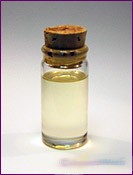 Palmarosa Essential Oil : Palmarosa Essential Oil : Botanical name: cymbopogon martini Use: fights infection, cools fever, improves digestion, circulation, cell growth, healing of wounds. Perfume Note: Middle Blends well with: Orange, Clary Sage, Coriander, Vetiver Source: grass Production method: steam distillation Aromatherapy benefits: serenity, refreshes, clarifies Aroma type: sweet, floral Warning: none noted |
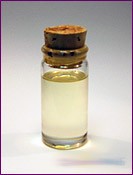 Petitgrain
Essential Oil Petitgrain
Essential OilAromatic Description: Fresh, woody, and slightly floral. Though distilled from the same botanical species as neroli and bitter orange, Petitgrain Essential Oil possesses its own characteristically unique aroma. Petitgrain Essential Oil is distilled from the leaves and sometimes the twigs and branches of the tree whereas neroli essential oil is distilled from the blossoms and Orange Essential Oil is typically cold pressed from the rinds of the fruits. Possible Uses: Acne, fatigue, oily skin, stress. |
|
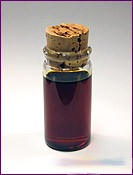 Patchouli
Essential Oil Patchouli
Essential OilAromatic Description: Rich, earthy, woody aroma with a nearly hidden fruity note. Possible Uses: Acne, athlete's foot, chapped skin, dermatitis, eczema, fatigue, frigidity, hair care, insect repellant, mature skin, oily skin, stress. Patchouli (Pogostemon cablin) : Essential oil of patchouli is obtained by the process of steam distillation from the leaves of the plant which are previously dried and fermented. The oil is thick and viscous and is orange-amber in color. It has a distinctively sweet and earthy smell that is long-lasting and unlike other essential oils, actually improves with age. Patchouli oil is antiseptic and anti-inflammatory and can be used in skin care to treat acne, oily skin and open pores as well as minor sores that are weeping and reluctant to heal. It is also beneficial in the treatment of athlete's foot, chapped and painful skin and eczema. Patchouli is particularly beneficial to aging skin and will also help prevent scars and stretch marks. When used in a massage blend, particularly in abdominal massage, or alternatively in a warm compress, patchouli can relieve constipation and combat flatulence. Patchouli can also be used to strengthen the spirits when exhaustion has set in and will help restore a sense of calm and determination in stressful times. The oil also has aphrodisiac properties and can benefit in particular those whose desire or sexual performance has been adversely affected by stress and fatigue. Patchouli oil can also be used as an insect repellent. Botanical name: pogostemom cablin Use: stimulates new cell growth, tightens tissues, speeds healing of sores, wounds, reducing body odor, 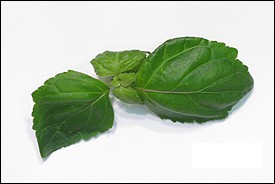 cools fever, and repels insects. Calms nerves, lifts depression, reduces
inflammation, fights infection, stimulates sexual desire.
cools fever, and repels insects. Calms nerves, lifts depression, reduces
inflammation, fights infection, stimulates sexual desire.Perfume Note: Base Blends well with: Chamomile, Lavender, Helichrysum, Geranium, Clary Sage Source: leaves Production method: steam distillation Aromatherapy benefits: pervasive, calming, enhancing Aroma type: sweet, spicy, musty, earthy Warning: none noted
|
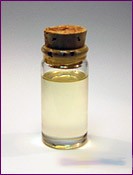 Peppermint
Essential Oil Peppermint
Essential OilAromatic Description: Minty, reminiscent of peppermint candies, but more concentrated. More fragrant than spearmint. Possible Uses: Asthma, colic, exhaustion, fever, flatulence, headache, nausea, scabies, sinusitis, vertigo. Safety Information: Avoid in cardiac fibrillation, epilepsy, fever. Mucous membrane irritant and neurotoxic (toxic to the nerves). Some of this information applies to oral use, but is provided for informational purposes (no essential oil should be taken internally without the guidance of a qualified aromatherapy practitioner). May cause sensitization. Peppermint Essential Oil : 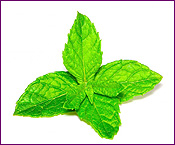 Botanical name: mentha piperita Use: relieves pain, muscle spasms, reduces inflammation, fights infection, clears congestion, opens sinuses. Regulates oiliness in skin, helps in digestion, stimulates the brain, promotes nerve health, cools fever. Perfume Note: Middle Blends well with: Cedarwood, Lavender, Eucalyptus, Helichrysum Source: plant Production method: steam distillation Aromatherapy benefits: cooling, refreshing, clearing Aroma type: menthol Warning: Should not be taken in conjunction with homeopathic remedies. Avoid if pregnant OR nursing. Safety Information: May irritate sensitive skin, stimulates menstrual flow. Stops the flow of mother's milk |
 Pine Essential Oil Pine Essential Oil Botanical name: Pinus sylvestri Use: fights infection, relieves muscle and joint pain, relieves congestion, clears mucous, increases urination. Increases blood pressure, and stimulates the adrenal glands and circulatory system. Repels insects. Antiseptic. Perfume Note: Middle Blends well with: Cedarwood, Rosemary, Tea Tree, Patchouli, Bergamot Source: needles, twigs, cones Production method: steam distillation Aromatherapy benefits: refreshing, stimulating, invigorating Aroma type: balsamic Warning: may cause irritation to sensitive skin. Increases blood pressure Safety Information: Do not use if you have high blood pressure |
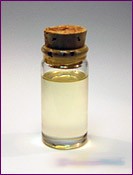 Parsley
Essential Oil Parsley
Essential OilAromatic Description: Herbacous, somewhat woody aroma. Possible Uses: Amenorrhea, arthritis, cellulites, cystitis, frigidity, griping pains, indigestion, rheumatism, toxic build-up. Safety Information: Hepatotoxic (toxic to the liver). Abortifacient (can induce abortions). Research that Tisserand refers to indicates that it has a strong abortifacient action. It should be used with extreme caution and avoided with and around pregnant women. Tisserand also indicates it may be a skin irritant. 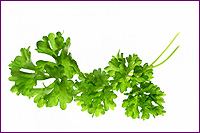 |
 Chocolate
Peppermint Essential Oil Chocolate
Peppermint Essential OilAromatic Description: Soft and smooth peppermint aroma with a detectible chocolate note. Possible Uses: The uses may be similar to those of traditional Peppermint Essential Oil. Little documentation is available regarding Chocolate Peppermint Essential Oil's therapeutic properties, contraindications or constituents. Use with caution in skin care and therapeutic applications. |
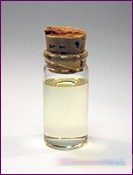 Scotch
Pine Essential Oil Scotch
Pine Essential OilAromatic Description: Fresh, woody, earthy, balsamic Possible Uses: Colds, coughing, flu, rheumatism, sinusitis. Safety Information: Sensitization can occur. Slight risk of sensitization. 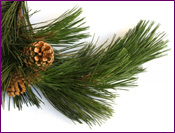 |
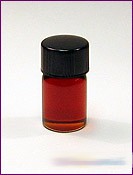 Rose
Essential Oil Rose
Essential OilAromatic Description: strongly floral, sweet. Possible Uses: Depression, eczema, frigidity, mature skin, menopause, stress. Rose Essential Oil : Botanical name: rosa damascena Use: fights infection, reduces inflammation, relieves muscle spasms. Increases urination, bowel movement, regulates menstruation. Calms nerves, decreases depression, stimulates sexual desire. Perfume Note: Base Blends well with: Jasmine, Fennel, Vetiver, Geranium, Clary Sage Source: flowers  Production method: steam distillation Aromatherapy benefits: relaxing, soothing, sensual Aroma type: sweet, floral Warning: none noted |
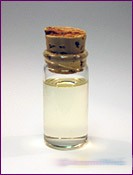 Rosemary
Essential Oil Rosemary
Essential OilAromatic Description: Fresh, herbaceous, sweet, slightly medicinal. Possible Uses: Aching muscles, arthritis, dandruff, dull skin, exhaustion, gout, hair care, muscle cramping, neuralgia, poor circulation, rheumatism. Safety Information: Neurotoxic (toxic to the nerves). Avoid in pregnancy. Avoid in cases of hypertension. Avoid in epilepsy, fever (no essential oil should be taken internally without the guidance of a qualified aromatherapy practitioner). Rosemary: Botanical name: rosamarinus officinalis Use: stimulates the adrenal glands, circulatory system, liver, gallbladder, promotes nerve health, improves the functioning of the heart and nervous system. Tones and tightens the skin, regulates oil secretion, fights infection, joint pain, muscle spasms, and eases digestive orders.  Perfume Note: Middle Blends well with: Lavender, Geranium, Lemon, Sandalwood Source: plant, flowers Production method: steam distillation Aromatherapy benefits: stimulating, clarifying, invigorating Aroma type: pungent, pine, woody, camphoric Warning: May trigger epileptic seizures in prone individuals, may irritate sensitive skin Safety Information: Avoid if you have high blood pressure |
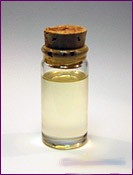 Rosewood
Essential Oil Rosewood
Essential OilAromatic Description: Sweet, woody, fruity, floral aroma. Possible Uses: Acne, colds, dry skin, dull skin, fever, flu, frigidity, headache, oily skin, scars, sensitive skin, stress, stretch marks. Rosewood: Botanical name: aniba rosaeodora Use: relieves pain, fights infection, diminishes depression, stimulates the brain, clears the head, improves immunity, helps skin disorders, stimulates sexual desire. Perfume Note: Middle Blends well with: Ylang Ylang, Ginger, Coriander, Rose, Geranium Source: tree Production method: steam distillation Aromatherapy benefits: calming, soothing, clearing Aroma type: soft, sweet, spicy, floral Warning: none noted |
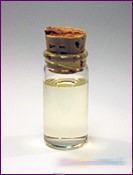 Spearmint
Essential Oil Spearmint
Essential OilAromatic Description: Minty, slightly fruity aroma that is less bright than peppermint. Possible Uses: Asthma, exhaustion, fever, flatulence, headache, nausea, scabies, vertigo. Safety Information: Mucous membrane irritant. Additional Notes: Whenever I'm concerned that Peppermint Essential Oil may overpower a blend or be a bit too stimulating, I turn to Spearmint Essential Oil either as a complete substitute for Peppermint Essential Oil or to blend with Peppermint to tone it down. Spearmint essential oil is a more subtle oil than 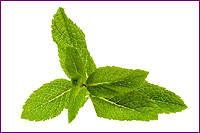 peppermint, but can be used for similar fragrancing and therapeutic
applications. I especially enjoy incorporating spearmint essential oil into
blends intended for easing headaches or stress. It's fresh, clean aroma blends
well with other oils including peppermint, rosemary, basil, bay laurel, orange
and lavender.
peppermint, but can be used for similar fragrancing and therapeutic
applications. I especially enjoy incorporating spearmint essential oil into
blends intended for easing headaches or stress. It's fresh, clean aroma blends
well with other oils including peppermint, rosemary, basil, bay laurel, orange
and lavender. |
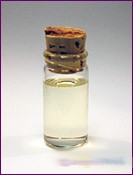 Spruce
Essential Oil Spruce
Essential OilAromatic Description: Fresh, woody, earthy, sweet, with a hint of a fruity note. Possible Uses: Coughing, depression. Safety Information: Possible skin irritation depending on true plant species 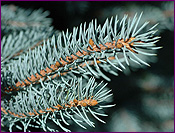 |
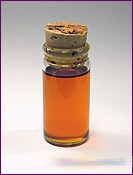 Spikenard
Essential Oil Spikenard
Essential OilAromatic Description: Earthy, woody, harsh, musty. Possible Uses: Rashes, wrinkles.
|
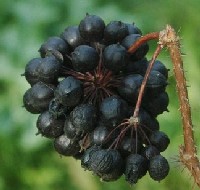 Siberian ginseng Essential Oil (Eleutheroccocus senticosus): This treatment for lethargy and fatigue also boosts resilience to environmental stresses. Take two capsules, or one dropperful of tincture, twice a day or as a tea 2-3 times a day -- unless directed otherwise. |
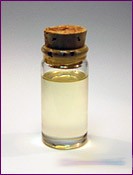 Sandalwood
Essential Oil Sandalwood
Essential OilAromatic Description: Rich, sweet, fragrant yet delicate, woody, floral. Possible Uses: Bronchitis, chapped skin, depression, dry skin, laryngitis, leucorrhea, oily skin, scars, sensitive skin, stress, stretch marks. Sandalwood: Botanical name: santalum album Use: fights infection, especially in the urinary tract, relieves muscle spasm, softens and soothes all skin types, moisturizes, stimulates new cell growth, clears mucous, congestion, calms nerves, stimulates sexual desires. Sandalwood is the oil from the first pressing. This oil is known as "Liquid Gold" and is the third oil referred to in the Wise Men's sacred offerings. 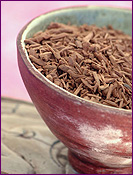 Perfume Note: Base Blends well with: Rosewood, Ylang Ylang, Patchouli, Neroli, Benzoin, Jasmine Source: tree Production method: steam distillation Aromatherapy benefits: relaxing, warming, grounding Aroma type: sweet, woody, warm Warning: none noted |
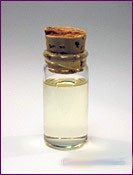 Spanish
Sage Essential Oil Spanish
Sage Essential OilAromatic Description: Herbaceous, camphorous, reminiscent in aroma to rosemary. Possible Uses: Acne, cuts, dandruff, dermatitis, eczema, sweating, hair loss, arthritis, muscular aches and pains, poor circulation, rheumatism, asthma, coughs, laryngitis, colds, flu, headaches, anxiety, fragrancing. 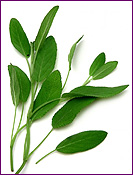 Safety Information: Tiserand and Lawless indicates that this oil is generally not toxic or irritating. They advise to avoid during pregnancy (Tisserand lists it as an abortifacient). |
 Saro
Essential Oil (Mandravasarotra Essential Oil) Saro
Essential Oil (Mandravasarotra Essential Oil)Aromatic Description: Camphorous yet uplifting and lemony/fruity. Possible Uses: Limited reliable information exists on Saro Essential Oil. Its camphorous/expectorant quality makes this an oil likely to be helpful with respiratory issues including easing coughs, asthma and bronchitis. Emotionally, this oil is uplifting and may be helpful in diffuser blends for depression and anxiety. Safety Information: Limited reliable information exists. It is recommended that Saro Essential Oil is not used with children or in pregnancy, epilepsy, with those having heart conditions or in other situations where fragile health exists. Avoid use on the skin. |
 Sweet
Fennel Essential Oils Sweet
Fennel Essential Oils
Status: Unsprayed |
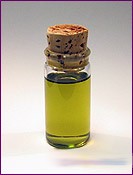 Tangerine
Essential Oil Tangerine
Essential OilAromatic Description: Fresh, sweet, citrusy, similar to the brighter aroma of tangerine peels (as compared to orange peels), but more concentrated. I have read conflicting reports as to whether Tangerine 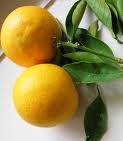 Essential Oil is phototoxic. It may be prudent to treat Tangerine
Essential Oil as a phototoxic oil. Therapeutic Properties: Digestive
tonic, Antiseptic, Antispasmodic, Calming
Essential Oil is phototoxic. It may be prudent to treat Tangerine
Essential Oil as a phototoxic oil. Therapeutic Properties: Digestive
tonic, Antiseptic, Antispasmodic, CalmingAromatherapy uses Florame Aromatherapy's tangerine essential oil can be used to help combat sleeplessness and stress when used in air diffusion. Tangerine essential oil should be diffused for 15 minutes before bed time to help induce sleep and reduce restlessness. To help relieve stress and create a relaxed ambience tangerine essential oil should be diffused every 4 hours throughout the day in 10-15 minute bursts. Tangerine essential oil can also help combat digestive complaints when taken internally. Take one drop of tangerine essential oil 3 to 4 times a day over a couple of days but medical consultation is advised before internal use. Tangerine essential oil is used as a food flavouring in the manufacture of drinks and sweets. Blends well with Bergamot organic essential oil, Roman camomile organic essential oil, Grapefruit essential oil, Fine lavender organic essential oil, lemon organic essential oil, Neroli organic essential oil, Rose essential oil, ylang ylang complete organic essential oil Safety: Keep out of reach of children. Avoid contact with eyes. Do not apply undiluted to the skin. Photosensitising. Pregnant women should seek medical advice before use. |
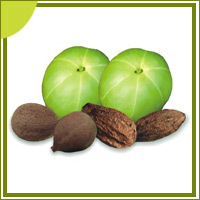
Triphala Essential Oil :
Triphala is used for many ailments like constipation:
|
Tagetes
Essential Oil |
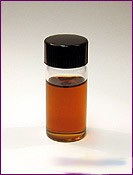 Thyme
Essential Oil Thyme
Essential OilAromatic Description: Fresh, medicinal, herbaceous. Possible Uses: Arthritis, colds, cuts, dermatitis, flu, insect bites, laryngitis, lice, muscle aches, oily skin, poor circulation, scabies, sore throat. Safety Information: Avoid in cases of hypertension. Thyme Essential Oil : Botanical name: thymus vulgaris Use: fights infection, improves immunity, eases pain of arthritis, eases muscle pain, improves digestion, relieves urinary tract infection and respiratory ailments. Improves circulation, elevates blood pressure. Overcomes emotional fatigue, nervousness, and stress, regulates oiliness of skin, regulates skin disorders. Perfume Note: Top Blends well with: Ginger, Tea Tree, Eucalyptus, Chamomile, Vetiver Source: leaves, flowers 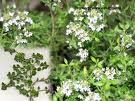 Production method: steam distillation Aromatherapy benefits: antiseptic, refreshing, strengthening Aroma type: intense, warm, spicy Warning: Avoid during pregnancy, if you have hyperthyroidism, or high blood pressure Safety Information: can irritate or sensitize skin and mucous membranes, stimulates menstrual flow. |
 New
Zealand Tea Tree Essential Oil (Manuka ) New
Zealand Tea Tree Essential Oil (Manuka )Aromatic Description: Woody, earthy, balsamic. It is richer and warmer than common Tea Tree. AromPossible Uses: (Uses listed are those for Common Tea Tree): Acne, athlete's foot, candida, chicken pox, cold sores, colds, corns, cuts, 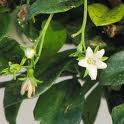 flu, insect bites, itching, migraine, oily skin, ringworm, sinusitis,
sores, spots, urethritis, warts, whooping cough
flu, insect bites, itching, migraine, oily skin, ringworm, sinusitis,
sores, spots, urethritis, warts, whooping cough |
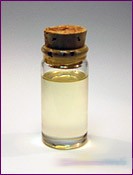 Lemon
Tea Tree Essential Oil Lemon
Tea Tree Essential OilAromatic Description: Lemony, citrusy, bitter. |
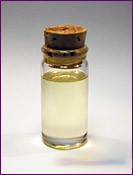 Tea
tree oil Essential Oil (Melaleuca alternifolia): This germicide
and antibacterial oil is great for cleaning infected wounds or as a
gargle for a sore throat -- use a 10-percent solution but use pure
100-percent tea tree oil. Botanical name: melaleuca alternifolia Tea
tree oil Essential Oil (Melaleuca alternifolia): This germicide
and antibacterial oil is great for cleaning infected wounds or as a
gargle for a sore throat -- use a 10-percent solution but use pure
100-percent tea tree oil. Botanical name: melaleuca alternifoliaTea Tree Essential Oil alternifolia
Tea Tree
Essential Oil |
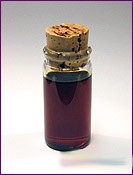 Vetiver
Essential Oil Vetiver
Essential OilAromatic Description: Woody, earthy, herbaceous, spicy almost smoky.etiver Possible Uses: Acne, arthritis, cuts, depression, exhaustion, insomnia, muscular aches, oily skin, rheumatism, sores, stress. Vetiver Essential Oil (Vetiveria zizanoides): Vetiver is a grass, a member of the family Poaceae (Gramineae) and it is native to southern India, Sri Lanka and Indonesia. It grows to a height of approximately 6 feet. It has deep, strong roots and is planted in some countries to protect the soil from erosion. Therapeutically, Vetiver oil has a profoundly relaxing effect on the nervous system, relieving tension and stress. It can be used to good effect in the treatment of insomnia. In India, Vetiver oil is known as the oil of tranquility. In baths or in massage, vetiver is beneficial in the treatment of the symptoms of disorders such as arthritis, rheumatism and stiff muscles. It is warming and comforting and will help to relieve the tension that is often associated with chronic pain. Vetiver oil also benefits the circulatory system, stimulating and warming, especially when used in combination with massage. In skin care, the antiseptic and slightly astringent properties of vetiver can be used to good effect in the treatment of oily skin that is prone to spots. 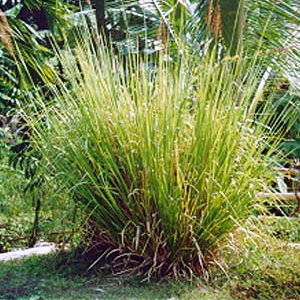 Botanical name: vetiveria zizannoides Use: stimulates circulation, improves immunity, fights infection, relieves muscle spasms, calms nerves and stimulates sexual desire. Perfume Note: Base Blends well with: Coriander, Marjoram, Juniper, Clary Sage Source: root Production method: steam distillation Aromatherapy benefits: harmonizing, relaxing Aroma type: earthy, woody, musty Warning: none noted |
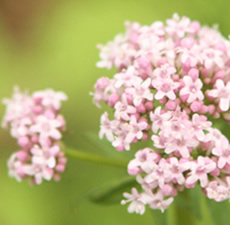
Valerian Essential Oil (Valeriana officinalis): An assistant to
sound sleep and a treatment for insomnia, Valerian comes in tincture,
extract, or tablet form. Use one teaspoon of the tincture in a quarter
cup of water, or take one or two tablets at bedtime.
|
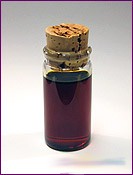 Vanilla
Absolute Essential Oils Vanilla
Absolute Essential OilsAromatic Description: Rich, warm, sweet vanilla aroma. Possible Uses: Perfumery and enhancing the fragrance of aromatherapy and natural skin/hair care formulations 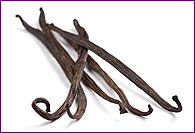
|
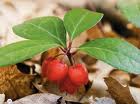 Wintergreen
Essential Oils Wintergreen
Essential Oils
Wintergreen is extensively used in pain relieving formulas, as its
chemical makeup is essentially that of liquid asprinextensively used in pain relieving formulas, as its
chemical makeup is essentially that of liquid asprin |
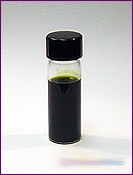 Violet
Leaf Absolute Essential Oils Violet
Leaf Absolute Essential OilsAromatic Description: Green, earthy, slightly floral in dilution. Possible Uses: Bronchitis, headache, insomnia, rheumatism, sluggish circulation, sore throat, stress. 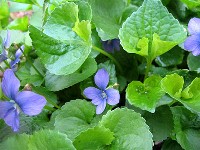 |
|
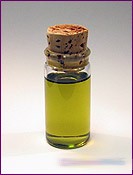 Yuzu
Essential Oil Yuzu
Essential OilAromatic Description: Fresh, delightful citrus aroma that resembles a combination of mandarin and grapefruit. Be selective in who you purchase yuzu essential oil from as some producers have been found to pass a citrus oil blend off as the more costly yuzu essential oil. as some producers have been fouPossible Uses: Yuzu is well known for its use in personal fragrances. Limited reliable information exists on the use of Yuzu in other specific applications. Its pleasant aroma makes Yuzu a good candidate for uplifting diffuser blends intended to help with anxiety, depression and nervousness. Children are very likely to enjoy the aroma.  Safety Information: Limited reliable information exists. As a citrus oil, Yuzu Essential Oil may be phototoxic. Do not use if the area of application will be exposed to sunlight for 24 hours. |
|
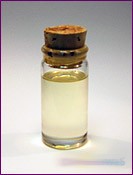 Ylang
Ylang Essential Oil Ylang
Ylang Essential OilAromatic Description: Fresh, floral, sweet, slightly fruity, fragrant yet delicate. Possible Uses: Anxiety, depression, frigidity, hypertension, palpitations, stress. Safety Information: Possible sensitization. Can cause headaches and nausea if used in excess. Ylang Ylang Essential Oils Botanical name: canangium odoratum Use: calms nerves, lifts depression, fights infection, improves circulation, lowers blood pressure, stimulates sexual desire. Perfume Note: Base Blends well with: Rose, Geranium, Clary Sage, Lavender, Elemi, Orange Source: flowers 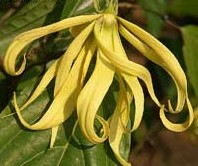 Production method: steam distillation Aromatherapy benefits: enticing, soothing, sensual Aroma type: fresh, floral, sweet, seductive Warning: none noted |
| Citrus Essential Oils are often thought of mostly for light, summery aromas, but I love using citrus essential oils all year round. My use of the citruses actually increases during the colder months as they are energizing and help to uplift the spirits. They are the perfect complement to blends that fight off the winter blues, "cabin fever" and depression. |
Blends to Ease the
Winter
Blues Lack of greenery, gray skies, a snow-covered world, reduced activity and the cold temperatures of winter can all lead to what is known as the "Winter Blues." The Winter Blues involve feelings of sadness, depression and loss of energy. The below blends can help ease the symptoms of the winter blues. Citrus oils are emphasized because they are energizing and uplifting oils. Orange, lemon and grapefruit oils are inexpensive (especially orange) and are also favored by many people, so your whole household may enjoy the aroma. When selecting and using oils, be sure to follow all safety precautions and remember that aromatherapy should not be used as a substitute for proper medical treatment. |
Aroma-Stream Essential Oil Diffuser $85.00
|
Healing Stones, Healing Crystals Home Page